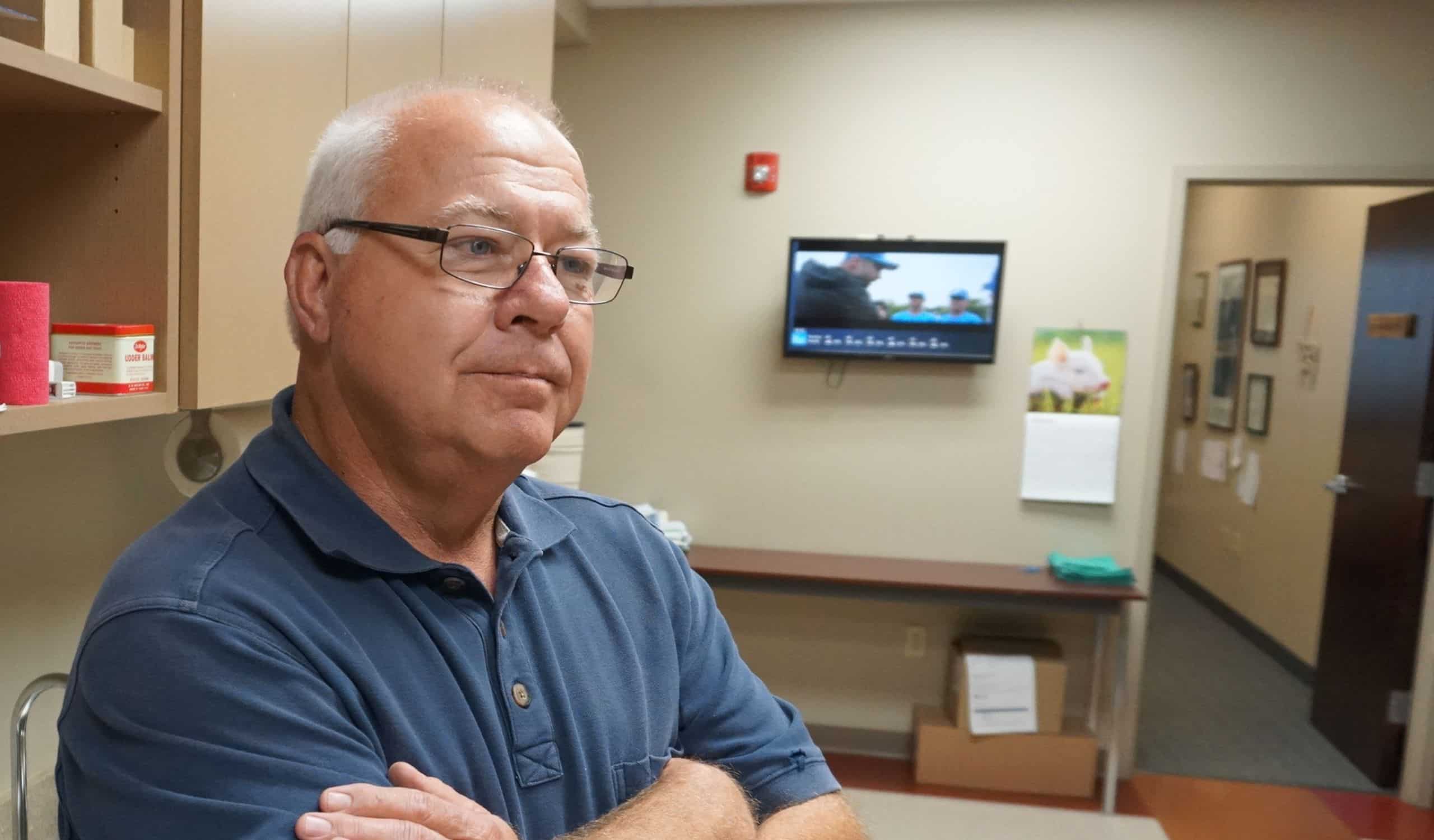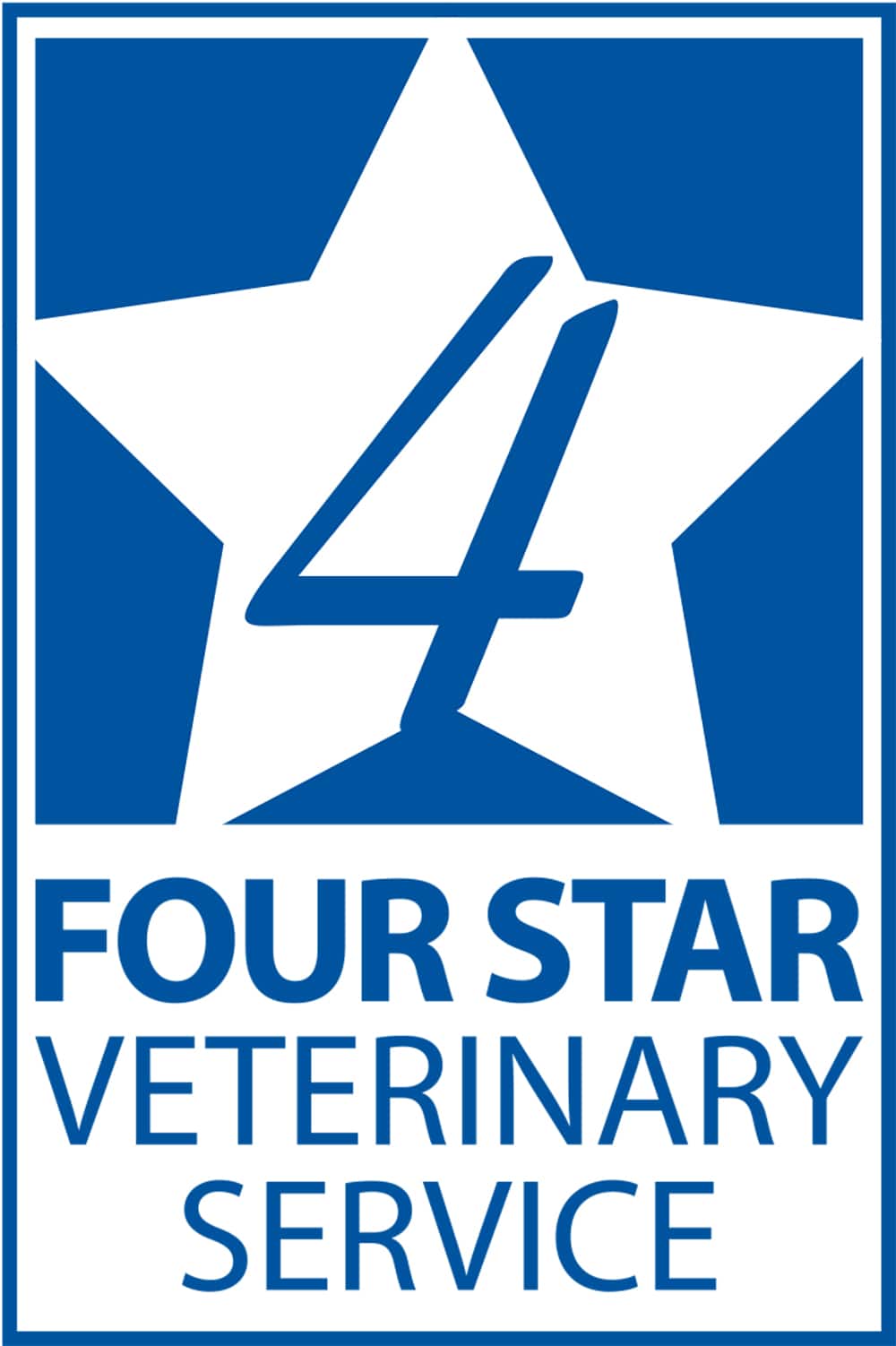
North Carolina was known to be a dream location to raise pigs. But now, according to veteran swine practitioner, Randy Jones, DVM (NCST ’85), doing business in a highly regulated state combined with the inflated cost of feedstuffs, fuel, labor, and the high rate of litigation, makes pig ownership a burden that seems only accessible to the biggest of integrators.
However, Dr. Jones and business partner Cary Sexton, DVM (Miss St ’03), Livestock Veterinary Services, Kinston, NC, have carved out a swine veterinary business that seems comfortable riding the ebb and flow of the animal agriculture industry. “Once NC was one of the largest concentrations of independent swine operations in the county,” explains Dr. Jones. “Now, however, due primarily to lack of market access and volatility of the industry, we have seen a reduction in independent swine operators over the past 10 years. We continue to service those 1,200 to 20,000 sow operations that are streamlining their production expenditures to remain viable businesses. However, new independent pig production ownership has all but stopped.”
According to Dr. Jones, he and partner Dr. Sexton made the decision 10 years ago to embrace diversification. “I’m glad we did,” says Dr. Jones. “We are trying to do as many species as we can, which means more ruminant business. We built a haul-in facility which allows more producers to bring pigs (and ruminant species) to our facility for surgeries, etc. It has also allowed us to do more show pig business, which is growing in the area.”
He adds, “There just are not a lot of food animal veterinarians in these parts, so having the haul-in facility has expanded our business to more of the East Coast. There has also been an explosion in small ruminant ownership – goats, sheep, llama, and alpacas – which is changing the overall business focus. Parasitism and nutrition are huge issues, and these owners are counting on us to help them.”
The partners are optimistic with the various opportunities available to an aggressively professional practice. “We believe swine buildings cannot remain empty forever. There are always innovative growers who recognize opportunities and are buying many of these older facilities and adapting them to grow-out and production facilities,” emphasizes Dr. Jones. “Those producers will always need an experienced veterinary group to assist through these ventures and we are being brought into many of these decisions early in the process to evaluate facilities, discuss new genetics, flow management and, of course, marketing opportunities.”
Primarily, in these discussions is disease management plans – especially focused on containing PRRS – a disease Dr. Jones has been battling for more than three decades.
“I can go back to 1987 where I was called in for a second opinion on a farm that had what the attending veterinarian was calling SMEDI (Swine Mummification, Embryonic Death, and Infertility), a reproductive disease syndrome usually caused by porcine parvovirus and porcine enterovirus,” Dr. Jones vividly recalls. “However, the pigs were negative for both viral components. I called Dr. Harvey Hilley, who was my instructor at NCSU-CVM, and he said I needed to send some samples to the University of Minnesota Diagnostic Lab and to Dr. Han Soo Joo because he was looking at a new, emerging pig disease. At that time, it was being referred to as Mystery Swine Disease. As it turned out, it spread rapidly from one farm to other farms. We were soon inundated with abortion storms. Later they identified the virus as PRRS followed in the early ‘90s with the first vaccine.”
The practitioner says the virus has constantly stayed one step ahead of them. He says like so many swine practitioners, they are making a visible impact with biosecurity, vaccine management and overall producer education programs. “We continue to battle resident viruses here in NC with a watchful eye to the newer variants currently in the Midwest populations,” outlines Dr. Jones. “We have some excellent tools to stabilize farms now. Preventing the next break is always the problem and our concern. It seems that every 10 years or so, a PRRS strain will come through our swine facilities that we are not prepared to battle yet. That is why this disease is so frustrating. We can stabilize a farm with the tools we have, but these herds just do not stand a chance against the new strains. It has kept me up at night since I got out of veterinary school.”
Livestock Veterinary Services is part of Four Star Veterinary Service consisting of twenty-five swine veterinarians. Dr. Jones says being part of the bigger Four Star group has been a welcomed business and social move for their practice. “It has allowed us to offer competitive product pricing (due to the group’s combined buying power) but more importantly, “he adds, “it allows us a window into what is coming our way regarding new disease strains, etc. The Midwest usually sees the new disease strains first. This gives us a solid partnership of like-minded veterinarians to communicate with and plan our defense strategies. The association has especially been beneficial in terms of professional enhancement, to discuss issues among colleagues who have similar issues.”
He adds, “I fear – whether it be PRRS, flu, etc. – we still have huge gaps in biosecurity. No matter how much we train, teach and place protocols in place, somehow, they are being sidestepped, and the system pays the price.”
Dr. Jones points to a recent example. “This past winter we had a bad Porcine Epidemic Diarrhea virus (PEDv) break. We saw the classic clinical signs of the virus causing diarrhea in a substantial proportion of all ages of swine. It cost our producers a lot of money and production potential.”
He adds, “It does not give you a lot of hope if a foreign animal disease (FAD) comes along. With all the pig movement in and out of each state, I’m not sure how we could contain it. The people working on the Foreign Animal Disease Preparedness and Response Plan (FAD PReP) issue have made a lot of progress in developing strategies in slowing down or halting the spread, however, it is still a huge challenge we all must be focused on. The key still rests in how fast we will recognize the FAD and how quickly we can implement containment protocols and how quickly we can have a vaccine in place to stop the disease.”
